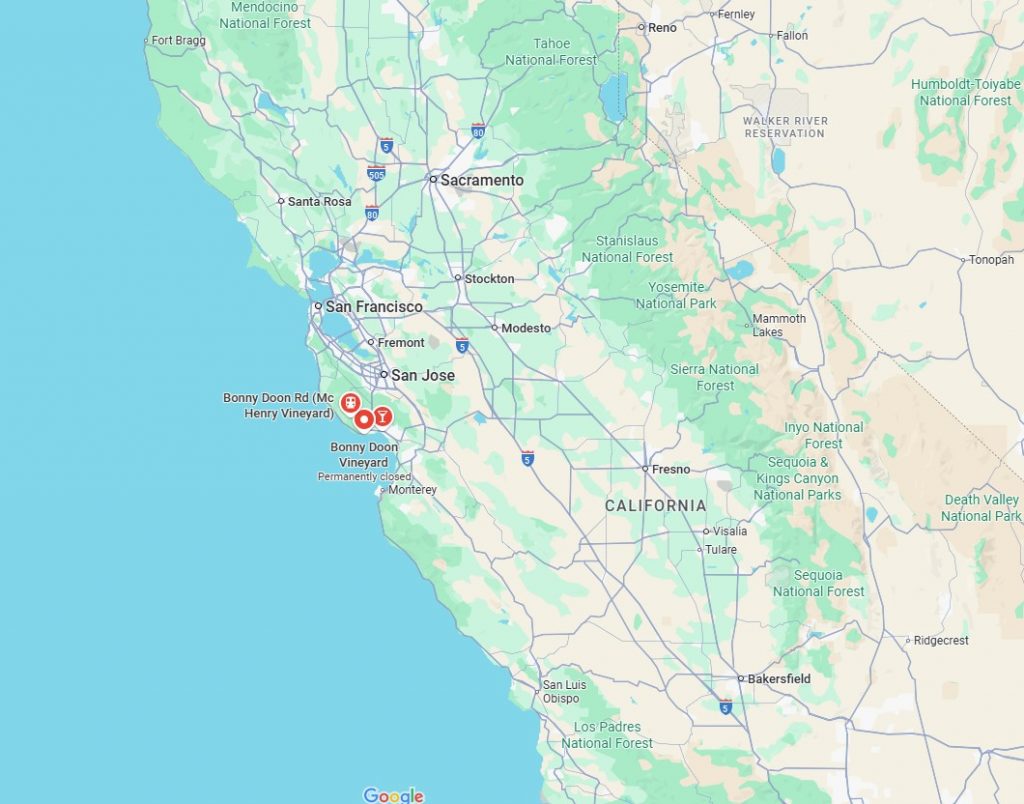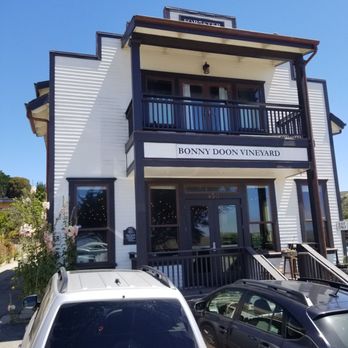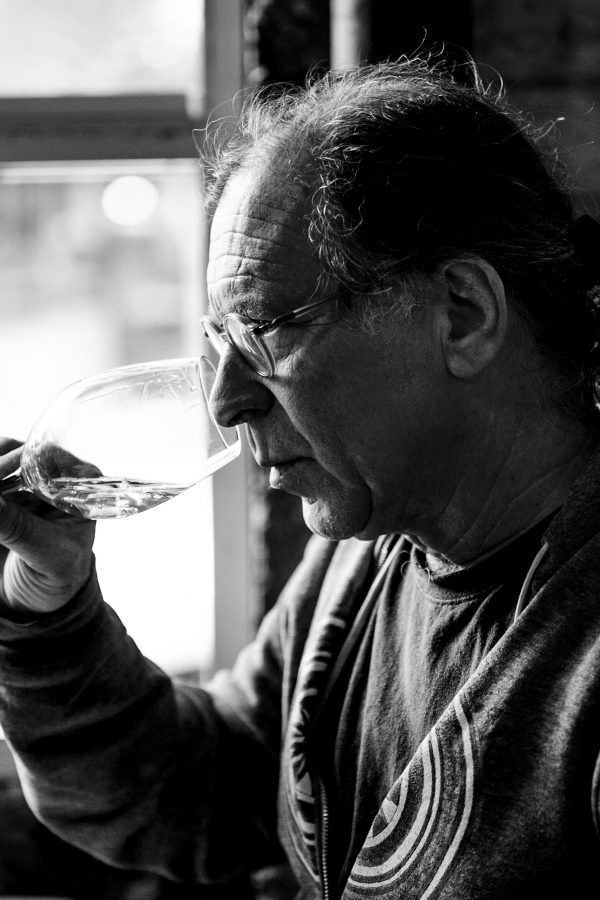Nestled along California’s central coast, Bonny Doon Vineyard stands as one of the most iconoclastic and influential wineries in American history. Born out of iconoclasm, curiosity, and a passion for Old World wines, Bonny Doon has charted an unconventional path since its inception in 1983. At the heart of this journey is the enigmatic and ever-curious Randall Grahm—winemaker, provocateur, and self-styled “Rhône Ranger.” His restless pursuit of terroir expression, biodynamic harmony, and varietal authenticity has made Bonny Doon a touchstone for innovation in American viticulture.
History of the Winery
Bonny Doon Vineyard was founded by Randall Grahm in 1983 in the coastal hills near Santa Cruz, California. Initially obsessed with producing the Great American Pinot Noir, Grahm quickly discovered the fickleness of the grape in California’s coastal climate and rocky soils. He shifted his focus toward Rhône varieties—Syrah, Grenache, Mourvèdre—drawn by their adaptability and potential for expressive terroir.
By the late 1980s, Bonny Doon had become synonymous with Rhône-style wines in the U.S., earning Grahm the moniker “The Rhône Ranger.” His seminal blend Le Cigare Volant—a tribute to Châteauneuf-du-Pape and a playful nod to a French law banning flying saucers from vineyards—inaugurated a new era of sophisticated yet humorous California winemaking.
Over the next two decades, Bonny Doon evolved through numerous phases: biodynamic conversion, radical transparency in labeling ingredients, and even reducing production to focus on smaller, terroir-expressive lots. In 2006, the winery divested its large-volume brands to realign with Grahm’s original vision. In 2020, Grahm sold Bonny Doon to WarRoom Ventures but remains involved in shaping the estate’s future.

Bonny Doon Vineyard
328 Ingalls Street, Santa Cruz, CA 95060, United States
+1 (831) 425-3625
email | www.bonnydoonvineyard.com
Bonny Doon on Google Maps | Instagram | LinkedIn | X (Twitter) | Facebook
The People
Randall Grahm is not merely a winemaker but a philosophical force in the world of wine. Educated at UCSC and later at UC Davis, he blends literary wit, scientific curiosity, and a deep reverence for the land into every bottle. Grahm was one of the first American winemakers to champion terroir as more than marketing—he saw it as the soul of wine.
Known for coining eccentric label art and imaginative storytelling, Grahm’s persona helped Bonny Doon become a cultural as well as vinous phenomenon. His legacy includes promoting biodynamic agriculture, initiating transparent ingredient labeling in wine, and advocating for the planting of obscure varietals in California. Today, while he has stepped back from full-time operations, his philosophy continues to shape the brand’s ethos.
Under WarRoom Ventures, the winemaking team remains committed to sustainable farming and restrained intervention, continuing Grahm’s commitment to wines that express place rather than ego.
Vineyards & Terroir
The vineyards behind Bonny Doon’s wines are scattered across California’s Central Coast, but each site is chosen with deliberate care to reflect Randall Grahm’s obsessive pursuit of terroir expression. While Bonny Doon no longer owns its original estate vineyard in the hills above Santa Cruz, its legacy lives on in the winery’s devotion to climate-sympathetic viticulture and soil-conscious site selection.

Today, the fruit is sourced from a tightly curated network of biodynamic, organic, or sustainably managed growers from Monterey County south to San Luis Obispo, with each vineyard contributing a distinct geological and climatic signature.
One of the key sourcing regions is Arroyo Seco, a sub-AVA of Monterey County that plays a central role in Bonny Doon’s Grenache and Albariño programs. The riverbed soils here are composed of deep, gravelly loams interspersed with cobblestones—remnants of ancient alluvial fans deposited by the Arroyo Seco River. These well-drained soils reduce vine vigor, concentrating fruit character while preserving aromatic finesse. The site is bathed in cool marine air funneling in from the nearby Pacific, giving a long growing season ideal for nuanced, high-acid wines.
Another crucial site is the Chalone AVA, situated in the Gabilan Mountains east of Soledad. This is one of California’s most unique terroirs—a remote, high-elevation site resting on decomposed granite and limestone soils, remnants of an ancient seabed. These calcareous conditions, combined with significant diurnal temperature swings and arid weather, yield Albariño, Picpoul, and Grenache Blanc with profound minerality and salty tension—an expression often likened more to Galicia or Provence than California.
San Benito County, another under-the-radar gem in Bonny Doon’s sourcing map, contributes Mourvèdre, Grenache, and other Mediterranean varietals. The vineyards here sit on inland benchlands with calcareous clay-loam soils and are influenced by both cool air from the San Francisco Bay and the heat of the Central Valley. This duality creates ideal ripening windows for Rhône varietals that need sunlight and warmth to develop phenolic ripeness, yet benefit from cooling influences to preserve acidity and aromatic complexity.
More recently, Bonny Doon has developed relationships with growers in Paso Robles Highlands and Edna Valley, particularly for Syrah and Grenache. Paso Robles offers rich, iron-laced red clays and calcareous shale, while Edna Valley—California’s coolest AVA due to its direct exposure to Pacific fog—provides an ethereal delicacy and spice to Syrah, bringing freshness and restraint to otherwise powerful wines.
Bonny Doon’s vineyard philosophy is grounded in dry farming where possible, biodiversity in and around the vine rows, and the elimination of systemic chemicals. Even though the winery is no longer Demeter-certified biodynamic, many practices—such as composting, cover cropping, and the use of biodynamic teas—remain integral to its viticultural identity. The goal has never been to control the vineyard, but rather to listen to it—to coax from each plot a unique expression of geology, light, wind, and shadow.
This focus on site-specificity has led to an increasing use of single-vineyard bottlings and micro-lots, particularly for Albariño and Grenache, where clone, rootstock, elevation, and row orientation are all tracked and tasted with fastidious attention to detail. The resulting wines are less about polish and more about place—authentic, textural, and layered with nuance that speaks of their origin.
Bonny Doon’s terroir is not limited to one patch of land. Instead, it is a mosaic of microclimates and soil types, stitched together by Randall Grahm’s unrelenting commitment to honesty in the vineyard. Whether it’s the chalky austerity of Chalone, the alluvial grip of Arroyo Seco, or the sun-dappled serenity of Edna Valley, each vineyard lends a voice to the broader symphony that is Bonny Doon.

Wine Portfolio
Bonny Doon’s wine portfolio is both a love letter to the Old World and an experiment in New World identity. The flagship Le Cigare Volant, originally a Rhône blend of Syrah, Grenache, Mourvèdre, and Cinsault, represents the estate’s enduring commitment to balance, aromatic complexity, and food-friendliness. Its white counterpart, Le Cigare Blanc, is an homage to white Rhône blends, typically made with Grenache Blanc, Roussanne, and Picpoul.
Other standout wines include the Vin Gris de Cigare, a rosé that balances verve with texture, and Clos de Gilroy, a supple Grenache from Monterey with hints of violets and pepper. Bonny Doon has also gained attention for its Albariño, which delivers saline minerality and citrus precision—an unusual but welcome expression of Iberian character on California soil.
In recent years, the winery has explored canned wines, pét-nats, and other experimental formats, reflecting its progressive mindset. Yet despite its playfulness, Bonny Doon has never wavered from crafting wines that express a sense of place, crafted with an uncompromising respect for nature and tradition.
The Bonny Doon Legacy
Bonny Doon Vineyard is more than a winery; it’s a story of resistance against commodified wine, of pursuing authenticity in a world of mass-market sameness. Randall Grahm’s vision may have seemed quixotic in the 1980s, but today, terms like biodynamic, Rhône-style, and terroir-driven are on the lips of sommeliers and consumers alike—thanks in no small part to his work.
As Bonny Doon evolves under new ownership, its heart remains rooted in the principles Grahm instilled: irreverence with integrity, invention with tradition, and wine as both an agricultural product and a philosophical pursuit.
From the windswept ridges of Santa Cruz to the granite seams of Chalone, Bonny Doon continues to defy conventions—reminding us that great wine is not made in the lab, but grown in the soil, coaxed with care, and told through stories that last long after the bottle is empty.
One thought on “Randall Grahm and the Bonny Doon Revolution: A Winemaking Saga”